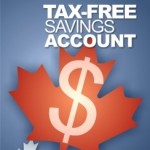 Traditionally, most Canadians thought that taking advantage of the immediate tax savings of a Registered Retirement Savings Plan (RRSP) for their retirement savings was the smartest choice when it came to saving for their retirement. But now that the Tax Free Savings Account (TFSA) has been around for a while, some people, including tax specialists and personal finance planners beg to differ. Why? Here are some reasons:
Traditionally, most Canadians thought that taking advantage of the immediate tax savings of a Registered Retirement Savings Plan (RRSP) for their retirement savings was the smartest choice when it came to saving for their retirement. But now that the Tax Free Savings Account (TFSA) has been around for a while, some people, including tax specialists and personal finance planners beg to differ. Why? Here are some reasons:
1) The TFSA has perks that the RRSP just doesn’t have. For one, the funds you contribute to a TFSA have already been taxed, and because any earnings you get from your investments are not taxable ever, this is a great vehicle for retirees who want to access funds from their investments with absolutely no tax consequences. Although the RRSP allows you to reduce your income tax payable right now, you have to also consider the future – when you are older and ready to retire – do you want to be paying a lot of tax at that time? Just because you may be retired, it doesn’t necessarily mean that your income will be really low, and it’s likely that the tax rates will continue to increase in the future, so you may end up paying just as much or more tax later. So, when deciding how to save for your retirement, you want to consider not only the present, but also the future consequences.
2) The TFSA won’t likely be around forever. As many other government initiatives have come and gone over the years, it is very likely that the TFSA won’t be here forever, so it’s a good idea to take advantage of this account while it’s still around. If you are in the position to max out your contributions, then by all means, consider it. You also have to understand that you should be treating this account as an investment and not a simple savings account – meaning in order to maximize your potential earnings, and therefore benefit from the tax savings, you should be investing in something that can earn you more than the 1 or 2% interest rate on the regular savings accounts.


